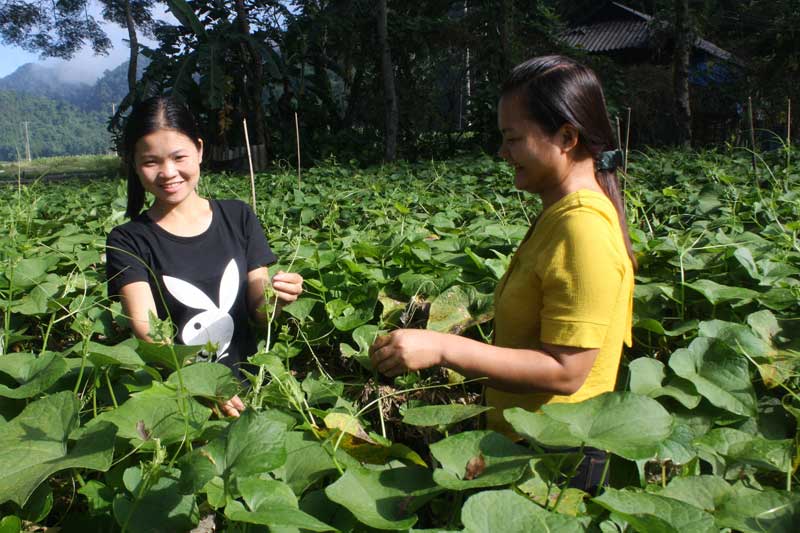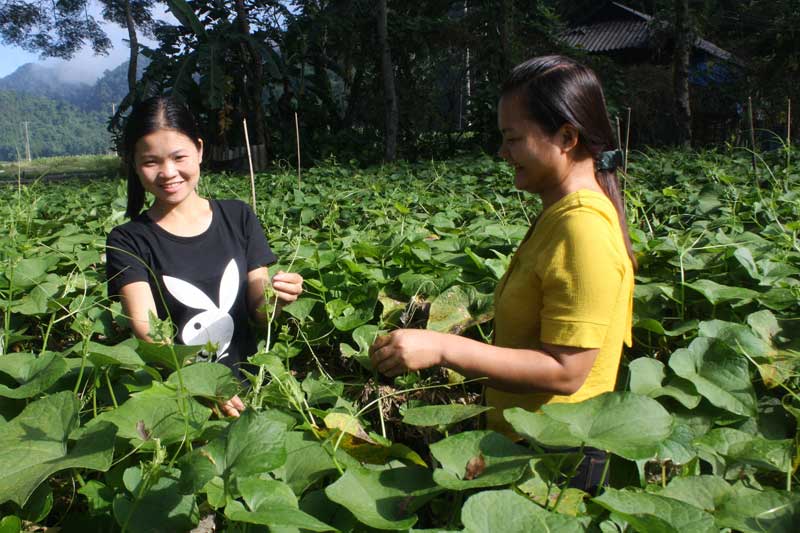
(HBO) – Smoother roads, busy trading activities and services, and prosperous villages with better economic conditions were our impression as we visited mountainous areas in Tan Lac in early Autumn when locals were busy preparing for the National Day festival.
In the summer-autumn crop this year,
farmers in mountainous communes of Tan Lac enjoyed bumper rice, maze and
chayote harvests. Their rice production was estimated at 0.56 tonne per
hectare. Maze farms, mostly in Quyet Chien, Lung Van, Ngo Luong and Bac Son
communes, also produced 0.55 tonne per hectares.
Chayote hub Quyet Chien, thanks to the
reform of cultivation technique and the application of VietGap standards, as
well as the formation of a cooperative, has developed its trademark and created
a sustainable agricultural value chain.
Tan Lac chayote vines have been put on
sale at big markets, and accessed restaurants and supermarkets in Hanoi and
some other provinces and cities. Therefore, economic conditions in Tan Lac have
been improved, increasing locals’ income and raising their living conditions,
especially among ethnic minority groups.

Farmers in Bieng village of Quyet Tien
commune in Tan Lac enjoy a bumper chayote crop with high prices
Improvement in infrastructure, health
care, socio-cultural system as well as stable security and order in mountainous
communes was another positive sign of the area. Statistics from the district’s
Office of Ethnic Affairs show that in 2017, 35 infrastructure works and
projects were built in the area at a cost of 17 billion VND, along with 19
other projects to assist the production with a total investment of nearly 3.5
billion VND.
In 2018, the district proposed to the
provincial People’s Committee 25 infrastructure projects with a total capital
of nearly 20 billion VND.
Efforts of mountainous communes in Tan Lac
in maintaining political security and social safety and order have been
recognised, as there were no complicated cases related to land conflicts,
compensation and ground clearance. The movement of community-based national
security protection has proved efficient, along with models of order-security self-management
in localities.
According to data from the Hoa Binh Provincial Party Committee, the industrial production index for the first six months of 2025 is estimated to have increased by 20% compared to the same period last year. This marks the highest year-on-year growth rate for this period since 2020.
In the first six months of 2025, Hoa Binh province’s export turnover was estimated at 1.145 billion USD, marking an 18.11% increase compared to the same period in 2024. Import turnover was estimated at $ 804 million, a 17.15% increase, which helped the province maintain a positive trade balance.
The lives of the ethnic minority farmers in Tan Lac district have gradually improved thanks to the new directions in agricultural production. This is a testament to the collective strength fostered through the professional associations and groups implemented by various levels of the district’s Farmers’ Union.
With the motto the "product quality comes first,” after nearly one year of establishment and operation, Muong village’s Clean Food Agricultural and Commercial Cooperative, located in Cau Hamlet, Hung Son Commune (Kim Boi district), has launched reputable, high-quality agricultural products to the market that are well-received by consumers. The products such as Muong village’s pork sausage, salt-cured chicken, and salt-cured pork hocks have gradually carved out a place in the market and they are on the path to obtaining the OCOP certification.
In the past, the phrase "bumper harvest, rock-bottom prices" was a familiar refrain for Vietnamese farmers engaged in fragmented, small-scale agriculture. But today, a new spirit is emerging across rural areas of Hoa Binh province - one of collaboration, organisation, and collective economic models that provide a stable foundation for production.
Maintaining growing area codes and packing facility codes in accordance with regulations is a mandatory requirement for agricultural products to be eligible for export. Recently, the Department of Agriculture and Environment of Hoa Binh province has intensified technical supervision of designated farming areas and packing facilities to safeguard the "green passport" that enables its products to access international markets.



